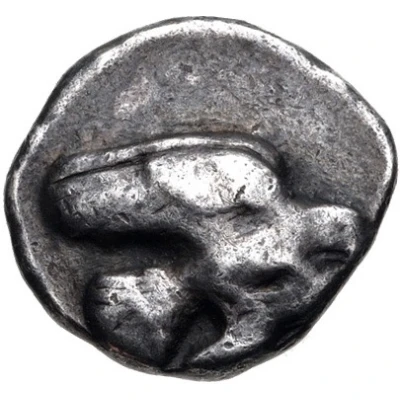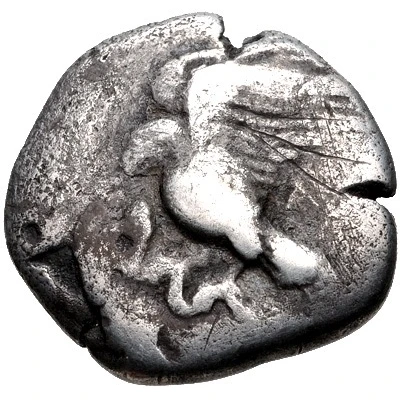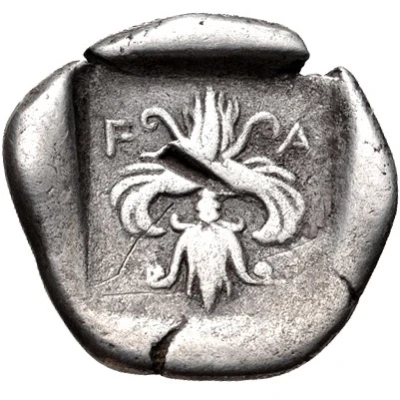


© Classical Numismatic Group, Inc.
Hemidrachm 78th-82nd Olympiad 468 BC - 452 BC
| Silver | 2.92 g | 14.0 mm |
| Issuer | Olympia (Elis) |
|---|---|
| Type | Standard circulation coin |
| Years | 468 BC - 452 BC |
| Value | Hemidrachm (½) |
| Currency | Drachm |
| Composition | Silver |
| Weight | 2.92 g |
| Diameter | 14.0 mm |
| Shape | Round (irregular) |
| Technique | Hammered, Incuse |
| Orientation | Variable alignment ↺ |
| Demonetized | Yes |
| Updated | 2024-10-09 |
| Numista | N#177914 |
|---|---|
| Rarity index | 100% |
Reverse
Nike running left within incuse circle
Comment
Seltman, Temple, p. 20 and pl. VIII, 4.
Interesting fact
The Hemidrachm coin was used as a form of currency in ancient Greece during the 78th-82nd Olympiad (468 BC - 452 BC). It was made of silver and weighed 2.92 grams. One interesting fact about this coin is that it features an image of a Pegasus, a mythical winged horse, on one side, and the profile of a helmeted man on the other. The Pegasus image was a symbol of the city of Olympia, where the coin was minted. This coin was used for everyday transactions and was also used as a form of payment for athletes who participated in the ancient Olympic Games, which were held in Olympia every four years.



